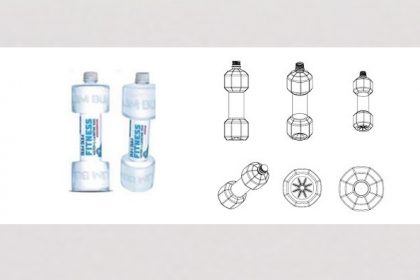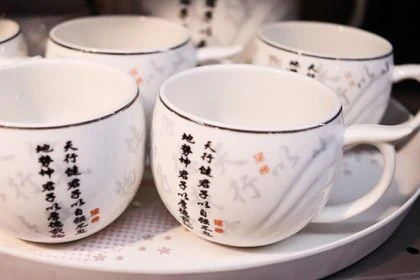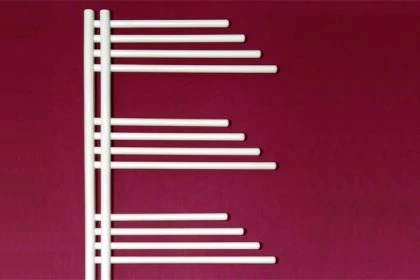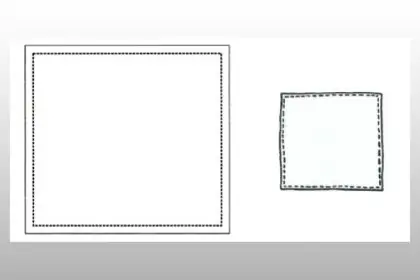In invalidity proceedings concerning a Community design for the dumbbell shape of the bottle design, the CJEU explained the individual character under EU Regulation 6/2002: must the overall impression be “clearly” different? And does the dumbbell shape of the bottle design have a technical function?
 The Community design is the term for the European protection of a design. In principle, a design can only be protected as a Community design if it is new – and if it differs from other designs.
The Community design is the term for the European protection of a design. In principle, a design can only be protected as a Community design if it is new – and if it differs from other designs.
The relevant EU Regulation (Art. 25(1)(d) of Regulation No. 6/2002) states that an application for a Community design will conflict with a prior design if no other overall impression is produced – on the informed user and taking into account the designer’s freedom of design. It is therefore not surprising that it is often precisely the individual character of a design that leads to invalidity proceedings.
In the case now decided by the CJEU on the Community design ‘beverage bottle’, the main question was how “clear” a difference in the overall impression must be within the meaning of the EU Regulation – and whether the dumbbell shape of the bottle design serves a technical function.
The facts
In 2017, Benkomers OOD (Bulgaria) filed an application for a Community design ‘beverage bottle’ with the European Union Intellectual Property Office (EUIPO) claiming protection for “beverage bottles”. The applicant, Bibita Group (Albania), filed an application for invalidity against this registration, relying on Article 25(1)(d)(iii) of Regulation 6/2002, claiming that the later Community design ‘drinks bottle’ lacked the necessary individual character and that this registration therefore conflicted with its own earlier design.
Put simply, the applicant accused the contested later design of being too similar to the innovative dumbbell shape of its own bottle design and therefore requested a declaration of invalidity for the later Community design ‘beverage bottle’ pursuant to Article 25(1)(d) of the EU Regulation.
But in vain; both the Invalidity Division and the Board of Appeal of EUIPO rejected the applicant’s requests. Now the European Court of Justice (CJEU) ruled in the case.
How “clear” must a difference be?
The applicant argued before the CJEU that the earlier design enjoyed particularly broad protection under Art. 6 in conjunction with the 14th recital of Regulation No. 6/2002. According to the 14th recital, the overall impression produced on an informed user when viewing the design must be “clearly” different. And that was the case here, was claimed by the applicant, since the innovative dumbbell shape of the bottle design was completely new when the own earlier design was applied for.
But the CJEU rejected this. The wording of Art. 6 of this EU Regulation was clear and unambiguous, the court emphasised. Accordingly, the only relevant factor is whether a design creates a different overall impression on the informed user than an earlier design – despite the reference in the 14th recital of Regulation No. 6/2002 to the requirement of a “clear” difference.
Furthermore, the CJEU made it clear that novelty or originality of an appearance have no influence on the assessment of individual character. In contrast, the degree of design freedom must be taken into account in the assessment of individual character.
Degree of freedom of the designer – unlimited here?
The plaintiff argued that the own innovative dumbbell shape of the bottle design showed that the degree of freedom of the own designer was basically unlimited – because for the first time a dumbbell-like bottle shape was developed.
However, the court rejected this point of claim. For the comparison, the freedom of design in the development of the older design was in no way relevant, but only the freedom of design in the development of the prior design.
And both designs had common non-creative features, even standardised features to a certain extent, because a bottle must correspond to the standardised quantities in which the respective beverage is sold and have a tight-fitting closure and a flattened bottom. The Board of Appeal was therefore right to find that the designer’s degree of freedom, although considerable, was not unlimited, contrary to the applicant’s submission.
Dumbbell shape of the bottle design – technical function?
In this respect, the assessment of the dumbbell shape was very important. Is such a bottle design innovative design freedom or does it also have a technical function? The plaintiff claimed that the dumbbell shape of the bottle design was in no way a result of a restriction arising from functionalities or quantity standardisation, but was rather innovatively and freely developed to give the product a sporty image.
But the CJEU did not follow the applicant’s arguments. The shape of the designs in question, which resembles a dumbbell, also had a technical function, the CJEU ruled – namely to enable a firmer grip on the bottle in question. For the overall impression, the dumbbell shape of the bottle design was therefore only of minor importance, and in any case the contested later design also resembled a dumbbell less in the overall impression.
The court pointed out that the degree of freedom of the designer in developing his design has an inversely proportional effect on the individual character. Thus, the more limited the designer’s freedom in developing a design, the more likely it is that even minor differences between the designs in question will be sufficient to create a different overall impression on an informed user. In other words, the greater the freedom of the designer in developing a design, the more perceptible the differences must be.
Overall impression: dumbbell shape does not matter
According to court, this was the case. There were numerous perceived differences between the earlier and the more recent bottle design, the court stated. The contested design had an angular appearance that distinguished it from the earlier design, the CJEU said. The older design was characterised by the cylindrical shape of its upper and lower parts and, accordingly, the circular shape of its sections, which gave it a rounder and smoother appearance.
For the comparison of two designs and the assessment of the overall impression created, all disclosed features must be taken as a basis – but without taking into account the technical features excluded from protection. The decisive factor is the presence or absence of “déjà vu”.
The CJEU also emphasised in this context that the comparison must not be limited to the analytical comparison of a list of similarities and differences, but must be “synthetic”. Furthermore, those differences that are not striking enough to affect the overall impression are not to be taken into account.
Finally, the CJEU ruled that the designs in question had significant differences; indeed, according to the CJEU, the shape of the dumbbell was of very little significance. The Board of Appeal had therefore rightly decided that the contested design did not in any way conflict with the prior design within the meaning of Article 25(1)(b) of Regulation No 6/2002. The action was dismissed in its entirety.
Do you want to protect or defend your product as a design?
Our lawyers will be happy to advise you. Please feel free to contact us if you are interested.
Sources for text and image:
Judgement of CJEU, bottle shape dumbbell, EU:T:2021:208








Leave a Reply